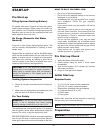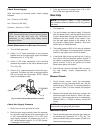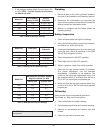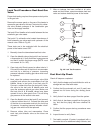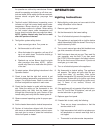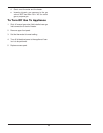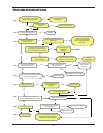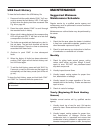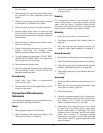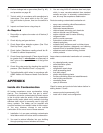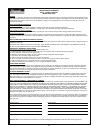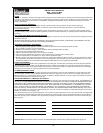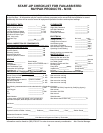
51
by local codes.
3. Check that area is free from combustible materi-
als, gasoline, and other flammable vapors and
liquids.
4. Check for and remove any obstruction to the flow
of combustion or ventilation air to heater.
5. Follow pre-start-up check in the Start-up section.
6. Visually inspect burner flame. It should be light
blue at full input. Remove and visually inspect hot
surface igniter and sensor for damage, cracking or
debris build-up.
7. Check operation of safety devices. Refer to manu-
facturers’ instructions.
8. Follow oil-lubricating instructions on pump (if re-
quired). Over-oiling will damage pump.
Water-lubricated circulators do not need oiling.
9. To avoid potential of severe burn, DO NOT REST
HANDS ON OR GRASP PIPES. Use a light touch;
return piping will heat up quickly.
10. Check blower and blower motor
11. Check for piping leaks around pumps, relief valves
and other fittings. Repair, if found. DO NOT use
petroleum-based stop-leak.
Periodically
1. Check relief valve. Refer to manufacturer’s
instructions on valve.
2. Test low water cut-off (if equipped). Refer to manu-
facturer’s instructions.
Preventive Maintenance
Schedule
The following procedures are recommended and are
good practice for all MVB installations.
Daily
1. Check gauges, monitors and indicators.
2. Check instrument and equipment settings. (See
“Post Start-Up Check” on page 46.)
3. Check burner flame. (Should see light blue flame
at full input rate).
Weekly
For low-pressure heaters, test low-water cut-off
device. (With heater in pre-purge, depress the low
water cut-off test button. Appliance should shut-off
and ignition fault light should come on. Depress reset
button on front of heater control panel to reset).
Monthly
1. Check flue, vent, stack, or outlet dampers.
2. Test blower air pressure. (See “Blower Check” on
page 44.)
3. Test high and low gas pressure interlocks (if
equipped). (See “Safety Inspection” on page 45.)
Semi-Annually
1. Recalibrate all indicating and recording gauges.
2. Check flame failure detection system components.
3. Check firing rate control by checking the manifold
pressure. (See “Manifold Check” on page 44.)
4. Check piping and wiring of all interlocks and shut-
off valves.
Annually
1. Test flame failure detection system and pilot turn-
down.
2. Test high limit and operating temperature. (See
“Post Start-Up Check,” page 46.)
3. Check flame sensor.
4. Conduct a combustion test at full fire. Carbon diox-
ide should be 8.0 to 9.0% at full fire for natural gas,
and between 9.0 to 10.0% for propane gas.
Carbon monoxide should be < 100 ppm.
5. Check valve coil for 60 cycle hum or buzz. Check
for leaks at all valve fittings using a soapy water
solution (while heater is operating). Test other
operating parts of all safety shut-off and control
valves and increase or decrease settings
(depending on the type of control) until the safety
circuit opens. Reset to original setting after each
device is tested.



